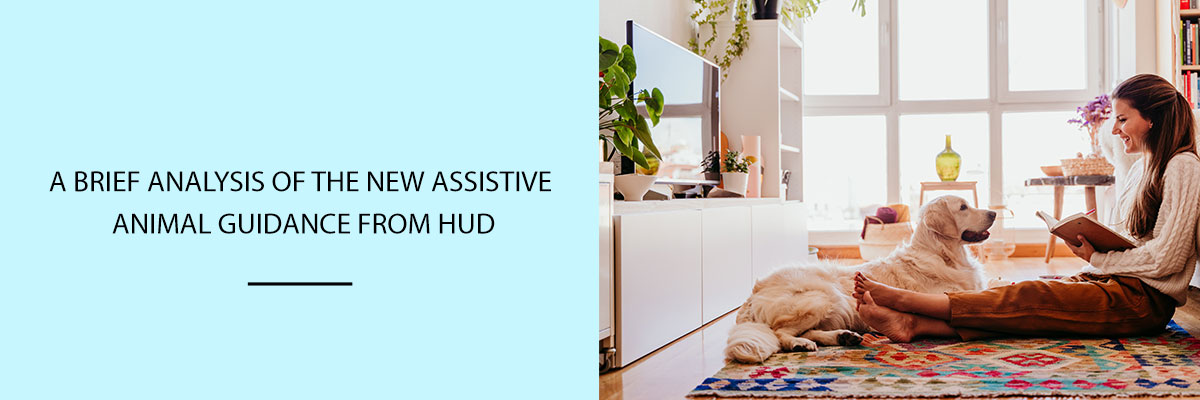On January 28, 2020, HUD released a publication known as “Assistance Animal Notice” (AAN), regarding the guidelines related to assistance animals. AAN is divided into two components. The first component contains a guide for housing providers as to how to assess a request for accommodation that contains an assistance animal. The second component contains the guide for persons with assistance animals that explains what a housing provider while assessing the request needs. AAN helps in bringing clarity to various issues that were under confusion earlier.
- Definition of Assistance Animals: AAN clarifies that assistance animals include service animals. If the animal is a dog, and is determined as a service animal, then no documentation is needed. If the animal is a support animal then further analysis is needed.
- Truth and Accuracy of Information: AAN provides that the housing providers may take appropriate actions to get the information provided by tenants in the application, verified for truth, and accuracy.
- Internet Letters and Determination of Disability: Some people get certificates, registrations and licensing documents for assistance animals over the Internet if they answer certain questions and pay specific fees. AAN has stated that such documentation is not sufficient to establish reliability relating to non-observable disability or disability-related to a need for an assistance animal. On the contrary, a legitimate, licensed health care professional who delivers services remotely can, however, provide documentation over the Internet that shall be valid.
- Disability-related Need: AAN explicitly instructs regarding the documentation and support for keeping an assistance animal. It requires the confirmation of the disability from a licensed health care professional and the need for an assistance animal. A connection between the two i.e. disability and the assistance animal is also necessary, especially where the disability is non-observable. For non-observable disabilities and for animals that provide emotional support, a housing provider may ask for reasonable information that is inconsistent with the documentation provided.
- Type of Animal: AAN significantly distinguishes between types of animals that can be considered as support animals or not. In this regard a person can keep common household pet and all the request regarding same should be granted assuming disability-related need has be established. Some unique animals are also allowed but only after establishing the relationship between the disability and the unique animal.
- Guidance for Documenting an Individual’s Need for Assistance Animals in Housing: this is the second part of the AAN that is helpful for housing providers. This part of the guidance provides for the documentation and information that a housing provider may need from a health care provider regarding the need of the assistance animal.
Conclusion
The AAN was much needed to bring clarity into various segments of the housing act related to assistance animals. The changes has made the entire process of verification and documentation hassle free and also prevents any kind of fraud from the applicants and unnecessary rejection by housing providers for the lack of information or documentation.


